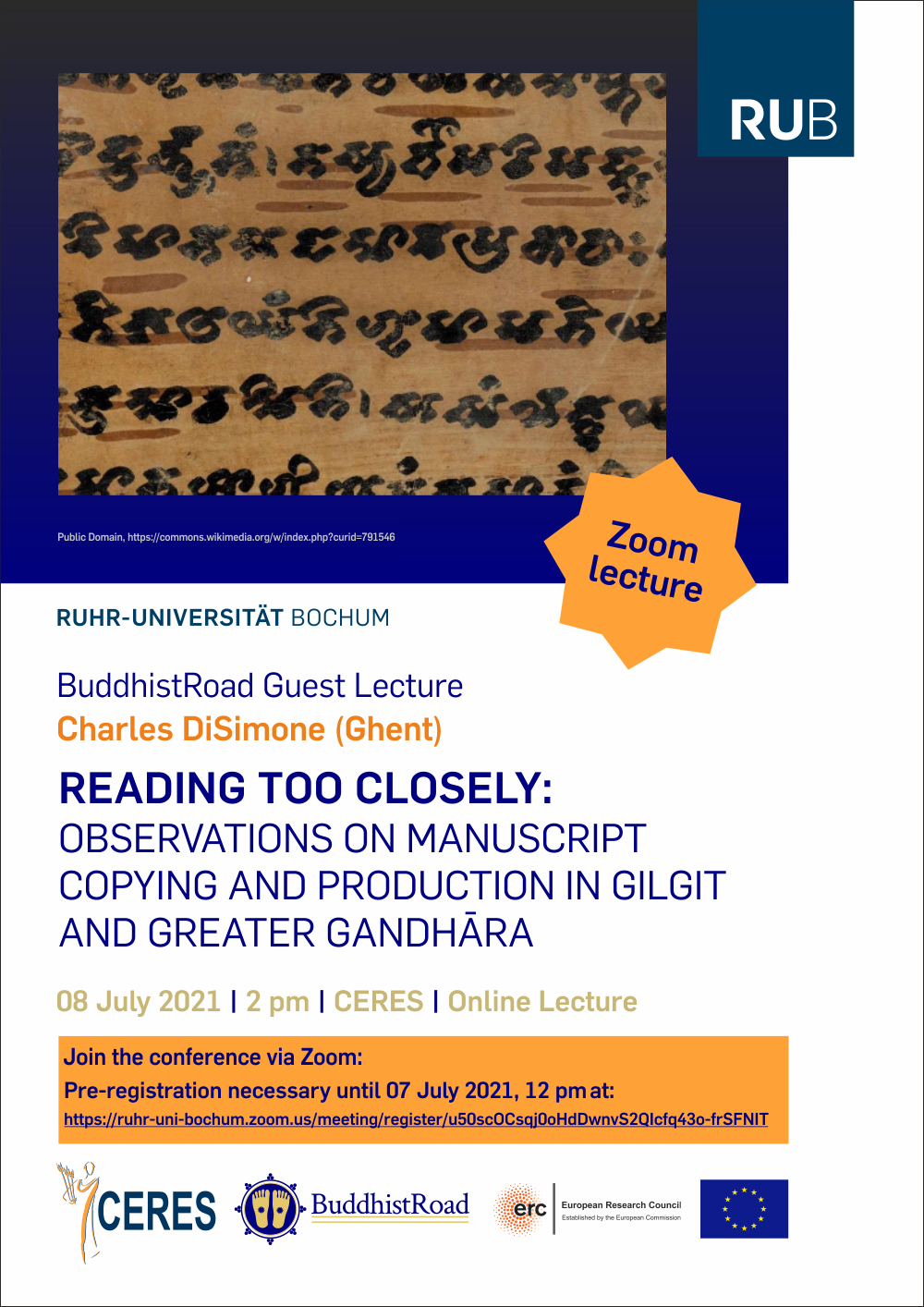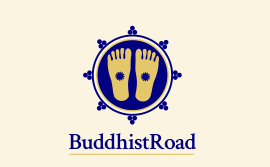Reading Too Closely

08 July 2021 - Charles DiSimone (Ghent)
Reading Too Closely: Observations on Manuscript Copying and Production in Gilgit and Greater Gandhāra
public online lecture at the BuddhistRoad project, CERES, Ruhr-Universität Bochum
The three-hundred-year period spanning the 6–8th centuries of the Common Era was a time of Buddhist predominance throughout the area known as Greater Gandhāra encompassing modern Afghanistan and parts of Pakistan and Northern India. A testimony to the strong Buddhist influence in this period may be seen in the numerous manuscript materials from this time and area that have been uncovered throughout the last century, and which are still appearing into the present. These manuscripts were copied in two distinct scripts, Gilgit/Bamiyan Type I (sometimes referred to as Round Gupta Brāhmī) and Gilgit/Bamiyan Type II (also known as Protośāradā) and may be referred to collectively as ‘Gilgit/Bamiyan Type Manuscripts’. They were produced on birch bark folios with carbon-based ink by an unclear number of what appear to have been professional scriptoria located variously around Greater Gandhāra, and the manuscripts were then collected into caches. The content of the manuscripts comprise Buddhist works of both Mahāyāna (predominantly sūtras) and Mainstream (predominantly āgama, vinaya, and avadāna) views. Taking examples from a number of collections of these Gilgit/Bamiyan Type Manuscripts, in this talk I will present observations on the methods and techniques employed by scribes in the copying of these manuscripts, the production of the birch bark folios that made up the material support of the manuscripts, and the spread of these manuscripts both within Greater Gandhāra and beyond.


